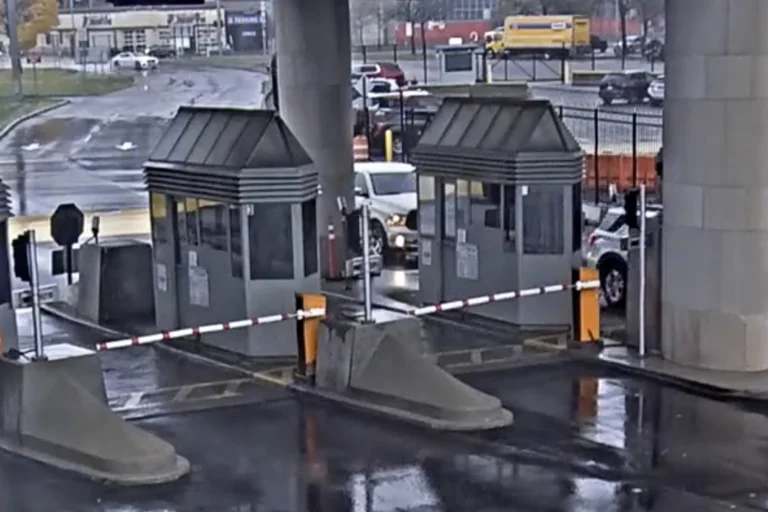Explosion Claims Life of Worker During Niagara Suspension Bridge Construction
Explosion Claims Life of Worker During Niagara Suspension Bridge Construction
The construction of the original Niagara Suspension Bridge in the 1850s marked a pivotal moment in engineering history. Designed by John A. Roebling, the bridge would later become an iconic structure, linking the American and Canadian sides of Niagara Falls. However, the ambitious project came at a great cost. One of the most tragic incidents during the construction was an explosion that claimed the life of a worker, highlighting the dangers and harsh realities of building such a monumental structure in an era lacking modern safety protocols.
The Ambitious Project
The Niagara Suspension Bridge was a groundbreaking project in the world of engineering. It was one of the first suspension bridges to be built using iron cables, and its construction presented numerous challenges. Situated over the Niagara River Gorge, the location itself was treacherous, and the bridge’s construction required innovative techniques. Workers were tasked with digging into the riverbed to lay the bridge’s foundations, an endeavor that was both complex and dangerous.
At the time, the methods used for laying the foundation included blasting rock to create space for the massive stone pillars that would support the bridge. This process involved the use of explosives, which were relatively new and not as refined as the materials we use today. With little understanding of the risks associated with explosives, workers relied on trial and error as they worked with unstable substances in a high-risk environment.
The Explosion
The fatal explosion occurred while workers were excavating the riverbed to set the foundations for the suspension bridge. Blasting powder, a common explosive used during the time, was being used to break up large rocks that would allow the construction of the bridge’s piers. Unfortunately, the explosive was unstable and unpredictable. During one such explosion, a worker was tragically caught in the blast. The explosion, caused by a miscalculation or malfunction in the detonation process, killed the worker instantly, and the blast sent debris flying into the river and surrounding construction site.
This incident was one of several that occurred during the construction, but it was by far the most fatal. The worker’s identity is not widely recorded, but his death sent shockwaves through the workforce and highlighted the grave dangers that bridge construction posed at the time. In an age when worker safety was often overlooked, the incident underscored the harsh realities of industrial labor.
Working Conditions at Niagara Falls
The workers who were involved in the construction of the Niagara Suspension Bridge were subjected to incredibly difficult working conditions. For one, the physical environment of the Niagara Gorge itself posed significant hazards. The site was surrounded by dangerous currents, steep cliffs, and unpredictable weather conditions. Working on the bridge required specialized skills, and many workers had to endure long hours in perilous conditions without the benefit of modern safety gear.
In addition to the physical environment, workers lacked the protective equipment that we take for granted today. Hard hats, harnesses, and safety protocols were not yet standard in construction, meaning that accidents like the explosion were common and often deadly. Scaffoldings were erected in dangerous places without the safety nets or guardrails that are now a requirement in most modern construction sites.
Despite the tremendous risks, many of the workers were driven by the promise of wages that could support their families. Many of them were immigrant laborers, coming from countries like Ireland and Germany, who were willing to take on the perilous jobs in exchange for an opportunity to build a future in North America.
The Aftermath
Following the tragic explosion, the response to the incident was immediate, but the lack of safety regulations at the time meant that fatalities and injuries were often overlooked. There were no comprehensive investigations into the cause of the explosion, nor were there efforts to implement lasting safety reforms at the construction site. Instead, the project continued, driven by the urgency of completing the bridge.
This lack of safety protocols would later become a significant issue during the construction of other large-scale infrastructure projects. While it was recognized that workers’ lives were at risk, the financial pressures and ambition of completing the project often overshadowed concerns for their well-being. The tragedy of the worker’s death served as a grim reminder of the human cost of industrial progress during this period.
The Legacy of the Niagara Suspension Bridge
Despite the tragedy and the numerous challenges faced during its construction, the Niagara Suspension Bridge was completed in 1855. The bridge was an engineering marvel, and its completion ushered in a new era of bridge-building technology. It stood as a testament to human ingenuity and determination. The bridge not only served as a vital link between the United States and Canada but also helped pave the way for the development of future suspension bridges, including the Brooklyn Bridge, designed by John A. Roebling himself.
In the years that followed, the legacy of the Niagara Suspension Bridge grew, and its significance in the history of engineering only deepened. However, the memory of the workers who gave their lives during its construction, including the one who died in the explosion, was not forgotten. Over time, the importance of worker safety became a more prominent issue in industrial labor, but it took many years before the standards we now take for granted were established.
Conclusion
The tragic explosion that claimed the life of a worker during the construction of the Niagara Suspension Bridge serves as a powerful reminder of the human cost of progress. While the bridge stands today as a symbol of engineering achievement, it is important to remember the workers who risked—and sometimes lost—their lives to build it. Their contributions paved the way for future generations of engineers, and the lessons learned from their sacrifices have influenced the way we approach safety in construction projects today.
As we look at the monumental structures of the past, we must acknowledge not only the brilliance of the engineers and designers but also the lives of the workers whose dedication and labor made such achievements possible. The tragic death during the construction of the Niagara Suspension Bridge is a poignant chapter in the story of industrial America, one that reminds us of the ongoing importance of worker safety in every field.






